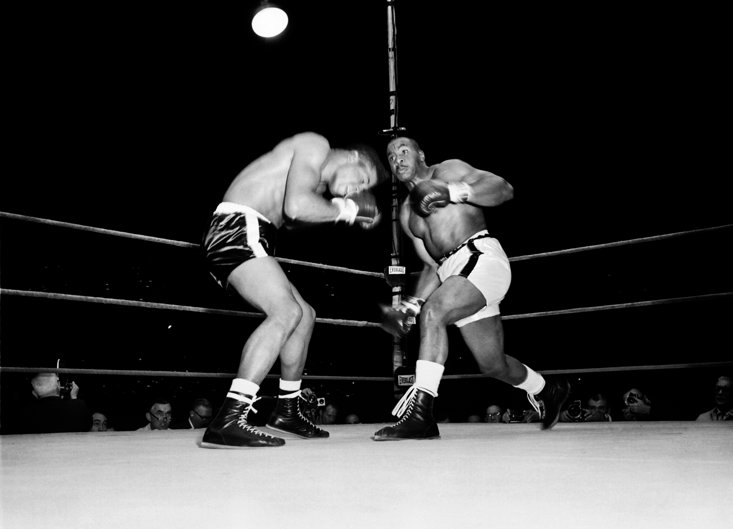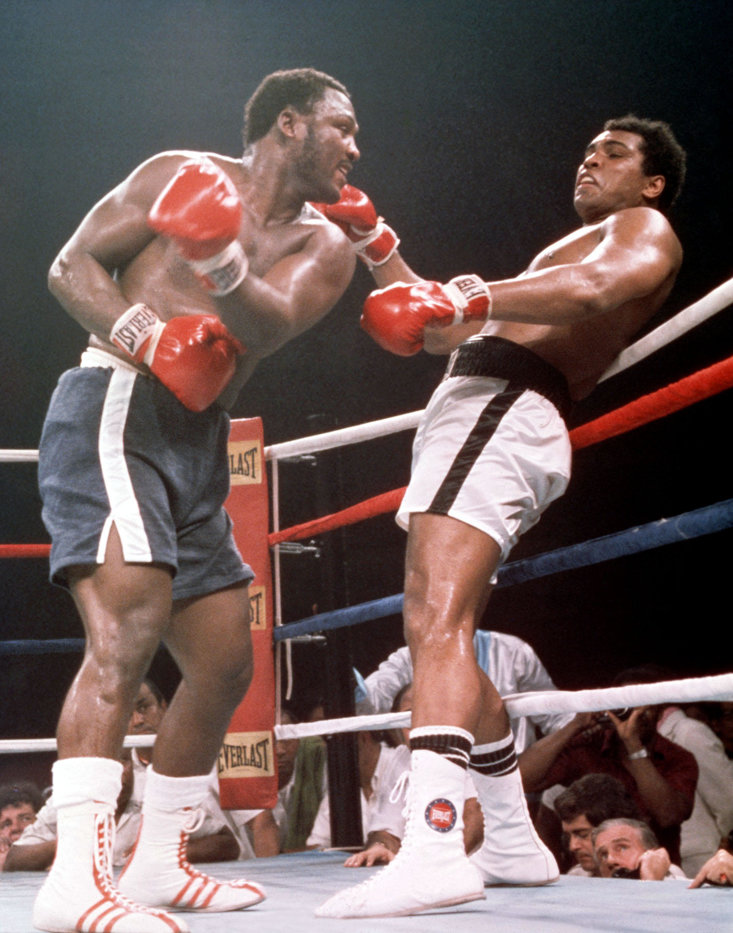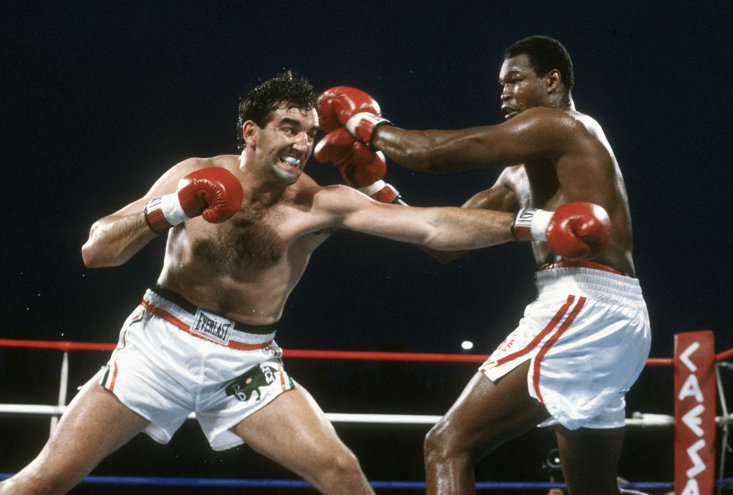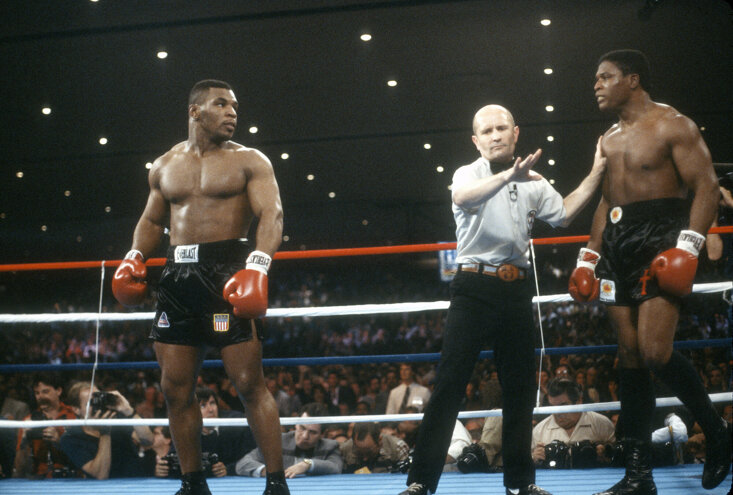The contracts are signed and the date is confirmed. On 18th May 2024, Tyson Fury and Oleksandr Usyk will clash to crown an undisputed heavyweight champion. Saudi Arabia will play host to a clash between the three-belt Usyk and WBC champion ‘The Gypsy King’.
It will be the first time since 1999 that a fight has taken place to crown an undisputed king of the big men. In honour of this long-awaited agreement, The Sportsman looks back at the crowning of previous undisputed heavyweight champions.
At the dawn of the heavyweight championship, when John L. Sullivan defeated Dominick McCaffrey in 1885 to become the first official claimant, the title was undisputed as a matter of course. Trying to convince ‘The Boston Strong Boy’ or anyone else that there should be dual title belts would have seemed utterly clueless. To most sane minds, it still is.
A single championship remained in use until the reign of Jack Dempsey. However, while two organisations formed during the title tenure of ‘The Manassa Mauler’, both the New York State Athletic Commission and the National Boxing Association recognised Dempsey as their king. While the seeds for dispute had been planted, there remained a single heavyweight champion.
In these pupal stages of the heavyweight crown, the International Boxing Union would be the next organisation to muddy the waters. They would emerge during the reign of Max Schmeling in 1931, recognising the same champions as the NBA and NYSAC through the 1951 reign of Ezzard Charles. The IBU would eventually change tack, becoming the modern EBU which sanctions European title fights nowadays. The organisation no longer crowns world champions in any division.

While several organisations were doling out championships over the past few decades, there had yet to be a true dispute over who the champion was. The NBA became the first of the modern sanctioning bodies to start operating, when it changed into the World Boxing Association during the title-holding of Sonny Liston. He would also be recognised by the newly-formed World Boxing Council while retaining the NYSAC title too.
It was during the reign of his successor, one Cassius Clay, that the first fracture in the heavyweight crown would occur. ‘The Greatest’ had barely pivoted to his new Islamic name of Muhammad Ali when the WBA stripped him of their title for signing to fight Liston in a rematch rather than their own challenger, Ernie Terrell. Instead, Terrell beat Eddie Machen for the vacant strap.
Few took the Mississippi fighter’s claim seriously, particularly because the world was not yet accustomed to multiple champions. In the first true title unification bout at the weight, Ali mercilessly pounded Terrell in an infamous 15-round decision win. ‘The Louisville Lip’ made a point of punishing Terrell for refusing to call him Ali. Terrell insisted on referring to him by former name Cassius Clay during the build-up to their ill-tempered fight.
Having unwillingly caused the title’s first fracture, Ali would also unfairly be the catalyst for its second. When he was suspended from the ring for refusing the draft for the Vietnam War, the belts in his possession became vacant. Big-punching Philadelphian ‘Smokin’ Joe Frazier picked up the NYSAC gong with an 11th round knockout of Buster Mathis. Meanwhile, Jimmy Ellis earned the WBA designation with a majority decision win over the durable Jerry Quarry.

This would set up the second undisputed title unification bout in heavyweight history. Frazier would lift the WBA gong, retain his NYSAC billing and capture the vacant WBC crown by stopping Ellis in four rounds in 1970. At this point, the NYSAC belt would be absorbed into the WBC, effectively making two championships again. Many refused to recognise Frazier as champion until he fought Ali. When ‘The Greatest’ returned, ‘Smokin’ Joe beat him in 1971’s ‘Fight of the Century’.
The title would remain without dispute until 1978. Frazier had lost the championship to George Foreman, who had it snatched from him in the Zaire heat by Muhammad Ali in 1974. Novice underdog Leon Spinks would become the last undisputed ruler for nearly a decade when he shockingly beat Ali for the titles in 1978. The WBC stripped ‘Neon Leon’ for facing Ali in a rematch rather than their number one challenger, Ken Norton.
Over the next decade the title fractured further, as the three-belt era began. Ali retired and vacated the WBA belt. He would tragically return for a pair of undignified defeats to Larry Holmes and Trevor Berbick. But his old belt went into the hands of a succession of boxers. Some are underrated, some long-forgotten, none truly feeling like the legitimate heavyweight champion of the world.
Norton was awarded the WBC belt before immediately losing it to Holmes in an absolute thriller. ‘The Easton Assassin’ would carry the title until 1983, when a dispute with promoter Don King over the purse to fight mandatory Greg Page led him to vacate the strap. At this point, another sanctioning body entered the fray. The newly-formed International Boxing Federation essentially continued Holmes’ reign, awarding him their distinctive red championship belt. The heavyweight title was now split three ways.

During a listless time for boxing’s banner division, its popularity was usurped by the middleweight ‘Four Kings’ of ‘Sugar’ Ray Leonard, Marvin Hagler, Roberto Duran and Thomas Hearns. Holmes was brilliant as IBF boss but still the public hankered for the man he had so brutally destroyed, Muhammad Ali. Tim Witherspoon had two reigns, one with the WBA and one with the WBC, but each was too brief to stake his claim for greatness. Pinklon Thomas, Tony Tubbs and Gerrie Coetzee were among the other fighters to hold a single belt during this period.
The cleansing fire was coming though, in the form of a bull-necked young heavyweight from the Catskills in New York. ‘Iron’ Mike Tyson was so dominant as he smashed his way through the heavyweight division that his coronation became a matter of when rather than if.
Don King, ever the visionary, saw two things that the land of the big men sorely needed. Number one was an undisputed champion for the first time in almost a decade. The second was the need for that champion to be Tyson. He set up the Heavyweight World Series, a programme of bouts between the reigning champions in a tournament format that also added ‘Iron’ Mike to the mix.
The plan worked to perfection. Tyson walloped Trevor Berbick to win the WBC strap and became the youngest heavyweight champion in history at the age of just 20 years and four months. WBA champion James ‘Bonecrusher’ Smith went into survival mode from round one of their unification clash, hearing the final bell but losing a wide decision and his title. The stage was set for the next undisputed heavyweight championship clash, as Tyson took on IBF claimant Tony Tucker. The young wrecking ball once again had to go the distance, but did more than enough to take the undisputed crown.
As with Frazier needing to beat Ali to take full recognition back in 1971, many fans were unwilling to anoint Tyson until he beat another fighter. Michael Spinks had been the “man who beat the man”, taking Larry Holmes’ IBF title and lineal recognition in 1985. He was stripped of the title for swerving Don King’s tournament but he would face the new champion in 1988. After just 91 seconds of in-ring action, Tyson could claim the lineal championship too. Boxing truly had an undisputed heavyweight champion again.

Tyson’s entire reign would play out without dispute, with James ‘Buster’ Douglas eventually beating him for all three titles in 1990. It was perhaps the greatest heavyweight upset of them all, a fact addressed when Evander Holyfield took the trio of titles from ‘Buster’ in his very next fight. The belts would fracture again in the hands of his successor, Riddick Bowe. ‘Big Daddy’ beat Holyfield in the first fight of their classic heavyweight trilogy, but discarded the WBC belt rather than fight Lennox Lewis. The titles would not come back together for another seven years.
The 1990s was the last great heavyweight decade. It had the aforementioned Bowe-Holyfield three-peat, the improbable and magical reign of George Foreman, the Tyson comeback and ultimate implosion against Holyfield, Oliver McCall upsetting Lewis before Frank Bruno realised his destiny and beat ‘The Atomic Bull’. What it didn’t have from 1992 to 1999 was an undisputed heavyweight champion of the world.
Lewis and Holyfield attempted to correct this in 1999 when the Brit put his WBC strap up against the WBA and IBF recognition of ‘The Real Deal’. In March 1999, Lewis looked to have done enough to become the first unassailable ruler since Bowe. But the judges somehow contrived to come up with a split draw verdict. The belts remained separated until a November rematch where, perversely, Holyfield boxed better but lost what felt like a make-good decision to Lewis.
That was the last time every portion of the world heavyweight crown resided with the same fighter. Because boxing cannot stop cutting its nose off to spite its face, Lewis was swiftly stripped of the WBA belt for failing to face mandatory challenger John Ruiz. His IBF belt would follow in 2002 when he refused to face Chris Byrd. Meanwhile, the World Boxing Organisation had been operating a title of its own since the mid-1990s. In the mid-2000s that title began to share top-billing with the established three titles, kicking off the unwanted four-belt era.
Wladimir Klitschko came the closest to undisputed status in the years since, holding the same WBA, IBF and WBO belts that fellow Ukrainian Oleksandr Usyk now wears. But now ‘The Cat’ has a date in the diary with the WBC king, Tyson Fury. Finally an undisputed champion looks set to be crowned.
When our story began, a single heavyweight was a matter of course. Now it is a rarity, and our sport is all the poorer for it. It's a vain hope, but perhaps the meddlesome sanctioning bodies can leave the winner of Usyk-Fury alone rather than pulling them in four directions with needless mandatories. Boxing needs an undisputed heavyweight champion of the world, now more than ever.
*18+ | BeGambleAware | Odds Subject To Change